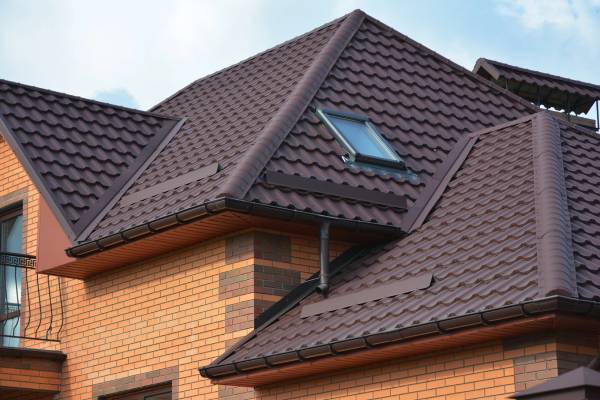When it comes to protecting your home, knowing the Minnesota roofing code is highly recommended for homeowners in Southwest Minnesota. These codes govern the materials, installation practices, and structural requirements needed to safeguard your property against weather extremes. This includes heavy snowfalls, strong winds, and up-and-down temperatures.
When it comes to protecting your home, knowing the Minnesota roofing code is highly recommended for homeowners in Southwest Minnesota. These codes govern the materials, installation practices, and structural requirements needed to safeguard your property against weather extremes. This includes heavy snowfalls, strong winds, and up-and-down temperatures.
The Importance of Roofing Codes in Southwest Minnesota
Roofing codes exist to establish safety, durability, and energy efficiency standards. In Southwest Minnesota, these guidelines tackle specific regional challenges like snow accumulation and wind loads.
The Minnesota roof load code, for instance, defines how much weight a roof structure must support, reflecting the area’s heavy snowfall and seasonal demands. Sticking to these codes means that roofs are more likely built to last, keeping families and properties secure.
Materials that Meet Minnesota Roofing Standards
Roofing materials play a big part in meeting code requirements. Asphalt shingles, a popular choice among homeowners, go well with MN roofing codes thanks to their durability and cost-effectiveness.
These shingles are tested for wind resistance and weather performance, guaranteeing compliance with local regulations. Metal roofing, another common option, excels in durability and energy efficiency, making it a practical choice for both residential and commercial roofing projects.
Flat roofing systems, like TPO and PVC, are frequently used for businesses or contemporary homes. These materials must meet the insulation and drainage requirements outlined in the Minnesota roofing code.
Natural options like wood shingles or shakes can add aesthetic appeal but require specific treatments to comply with fire resistance and durability standards.
Structural Requirements for Southwest Minnesota Roofs
The structural elements of your roof are as important as the materials used. For roofs to comply with the Minnesota roof load code, they must be designed to withstand snow and wind loads. Builders and contractors must calculate load-bearing capacities based on the area’s weather patterns and the building’s design.
Trusses and rafters are inspected to make sure they meet the necessary strength criteria. For homes undergoing residential roofing repairs and replacements near Southwest Minnesota, it’s important to work with experienced contractors who know these requirements.
Using substandard materials or failing to meet structural guidelines can lead to sagging, leaks, or roof failure, which could void warranties or insurance coverage.
Energy Efficiency and Ventilation Considerations
Energy efficiency is another thing covered by MN roofing codes. Proper insulation and ventilation systems are required to maintain a stable indoor temperature while minimizing energy costs. Insufficient ventilation can lead to moisture buildup, causing mold or structural damage over time.
Ventilation is particularly important during Southwest Minnesota’s colder months. Warm air rising from the interior can cause snow on the roof to melt and refreeze, leading to ice dams.
Installing ridge vents, soffit vents, and adequate insulation provides for compliance with energy efficiency standards while protecting the structural integrity of your roof.
Roofing Maintenance and Inspections
Regular maintenance and inspections are not just recommended but are often required to keep roofs in compliance with Minnesota roofing code standards. This includes dealing with small issues before they escalate into costly problems.
Homeowners looking for residential roof repairs and replacements near Southwest Minnesota should prioritize routine checkups to identify wear and tear, storm damage, or aging materials.
Roof inspections are particularly valuable for older properties or homes undergoing renovations. A professional assessment can identify code violations or recommend upgrades to bring the roof in line with modern standards.
These inspections are also critical for maintaining warranties, as manufacturers often require proof of regular maintenance.
Roofing Codes for Commercial Properties
For business owners, knowing roofing regulations for commercial roofing projects is equally important. Commercial roofs often involve flat or low-slope designs that require specific waterproofing, drainage, and insulation measures.
Materials like TPO, PVC, or rubber are commonly used but must meet stringent durability and fire resistance criteria outlined in the MN roofing codes.
Commercial properties also face unique challenges, such as accommodating HVAC systems or other rooftop equipment. These installations must comply with weight distribution and access requirements specified by local codes.
Working with a dependable roofing company helps guarantee that every aspect of your project is handled with expertise, from material selection to final inspection.
Common Roofing Code Violations and How to Avoid Them
Knowing the most frequent code violations can help homeowners and business owners avoid costly mistakes. These include inadequate ventilation, improper fastener placement, and insufficient flashing installation.
Another common issue is failing to meet the Minnesota roof load code, which can result in structural vulnerabilities.
Working with Minnesota roofing specialists is the best way to avoid these pitfalls. These professionals stay up to date on the latest code revisions and industry standards, so your roofing project meets all necessary requirements.
They also handle the permitting process, a step often overlooked by inexperienced contractors or DIY homeowners.
The Local Climate and Roofing Codes
Southwest Minnesota’s climate influences roofing regulations. With heavy snow in the winter and occasional severe storms, roofs must be designed to withstand a wide range of conditions. The Minnesota roofing code reflects these challenges, setting specific standards for snow load, wind resistance, and moisture control.
Climate considerations also extend to material choices. For example, metal roofing is ideal for shedding snow and resisting wind damage, while asphalt shingles offer reliable protection against rain and hail.
Flat roofs, often used in commercial roofing, require efficient drainage systems to handle heavy rainfall and melting snow.
Choosing the Right Contractor
Selecting the right contractor is imperative to work through the complexities of roofing codes. A dependable roofing company will guide you through every stage of the process, from initial inspection to final installation.
Look for licensed and insured professionals with a proven track record of compliance and customer satisfaction.
Contractors with expertise in residential roof repairs and replacements near Southwest Minnesota understand the unique demands of local roofing projects. They can recommend materials and designs that not only meet code requirements but also enhance your property’s value and longevity. They handle the paperwork and inspections required to certify your roof’s compliance with the Minnesota roofing code.
Roofing with Harvey’s Five Star Roofing
At Harvey’s Five Star Roofing, we take pride in helping homeowners and businesses with the complexities of the Minnesota roofing code. As a locally owned and operated company, we know the specific challenges faced by properties in Southwest Minnesota, and we’re committed to delivering top-quality roofing solutions specific to your needs.
Our team specializes in a wide range of services, including roof inspections, maintenance, and installations for both residential and commercial roofing projects.
With extensive experience in materials like asphalt shingles, metal roofing, and flat roofing systems, we make sure your roof meets all local codes and withstands the region’s demanding climate. Contact us today to find out more.
Roofing codes exist to establish safety, durability, and energy efficiency standards. In Southwest Minnesota, these guidelines tackle specific regional challenges like snow accumulation and wind loads.
The Minnesota roof load code, for instance, defines how much weight a roof structure must support, reflecting the area’s heavy snowfall and seasonal demands. Sticking to these codes means that roofs are more likely built to last, keeping families and properties secure.
Materials that Meet Minnesota Roofing Standards
Roofing materials play a big part in meeting code requirements. Asphalt shingles, a popular choice among homeowners, go well with MN roofing codes thanks to their durability and cost-effectiveness.
These shingles are tested for wind resistance and weather performance, guaranteeing compliance with local regulations. Metal roofing, another common option, excels in durability and energy efficiency, making it a practical choice for both residential and commercial roofing projects.
Flat roofing systems, like TPO and PVC, are frequently used for businesses or contemporary homes. These materials must meet the insulation and drainage requirements outlined in the Minnesota roofing code.
Natural options like wood shingles or shakes can add aesthetic appeal but require specific treatments to comply with fire resistance and durability standards.
Structural Requirements for Southwest Minnesota Roofs
The structural elements of your roof are as important as the materials used. For roofs to comply with the Minnesota roof load code, they must be designed to withstand snow and wind loads. Builders and contractors must calculate load-bearing capacities based on the area’s weather patterns and the building’s design.
Trusses and rafters are inspected to make sure they meet the necessary strength criteria. For homes undergoing residential roofing repairs and replacements near Southwest Minnesota, it’s important to work with experienced contractors who know these requirements.
Using substandard materials or failing to meet structural guidelines can lead to sagging, leaks, or roof failure, which could void warranties or insurance coverage.
Energy Efficiency and Ventilation Considerations
Energy efficiency is another thing covered by MN roofing codes. Proper insulation and ventilation systems are required to maintain a stable indoor temperature while minimizing energy costs. Insufficient ventilation can lead to moisture buildup, causing mold or structural damage over time.
Ventilation is particularly important during Southwest Minnesota’s colder months. Warm air rising from the interior can cause snow on the roof to melt and refreeze, leading to ice dams.
Installing ridge vents, soffit vents, and adequate insulation provides for compliance with energy efficiency standards while protecting the structural integrity of your roof.
Roofing Maintenance and Inspections
Regular maintenance and inspections are not just recommended but are often required to keep roofs in compliance with Minnesota roofing code standards. This includes dealing with small issues before they escalate into costly problems.
Homeowners looking for residential roof repairs and replacements near Southwest Minnesota should prioritize routine checkups to identify wear and tear, storm damage, or aging materials.
Roof inspections are particularly valuable for older properties or homes undergoing renovations. A professional assessment can identify code violations or recommend upgrades to bring the roof in line with modern standards.
These inspections are also critical for maintaining warranties, as manufacturers often require proof of regular maintenance.
Roofing Codes for Commercial Properties
For business owners, knowing roofing regulations for commercial roofing projects is equally important. Commercial roofs often involve flat or low-slope designs that require specific waterproofing, drainage, and insulation measures.
Materials like TPO, PVC, or rubber are commonly used but must meet stringent durability and fire resistance criteria outlined in the MN roofing codes.
Commercial properties also face unique challenges, such as accommodating HVAC systems or other rooftop equipment. These installations must comply with weight distribution and access requirements specified by local codes.
Working with a dependable roofing company helps guarantee that every aspect of your project is handled with expertise, from material selection to final inspection.
Common Roofing Code Violations and How to Avoid Them
Knowing the most frequent code violations can help homeowners and business owners avoid costly mistakes. These include inadequate ventilation, improper fastener placement, and insufficient flashing installation.
Another common issue is failing to meet the Minnesota roof load code, which can result in structural vulnerabilities.
Working with Minnesota roofing specialists is the best way to avoid these pitfalls. These professionals stay up to date on the latest code revisions and industry standards, so your roofing project meets all necessary requirements.
They also handle the permitting process, a step often overlooked by inexperienced contractors or DIY homeowners.
The Local Climate and Roofing Codes
Southwest Minnesota’s climate influences roofing regulations. With heavy snow in the winter and occasional severe storms, roofs must be designed to withstand a wide range of conditions. The Minnesota roofing code reflects these challenges, setting specific standards for snow load, wind resistance, and moisture control.
Climate considerations also extend to material choices. For example, metal roofing is ideal for shedding snow and resisting wind damage, while asphalt shingles offer reliable protection against rain and hail.
Flat roofs, often used in commercial roofing, require efficient drainage systems to handle heavy rainfall and melting snow.
Choosing the Right Contractor
Selecting the right contractor is imperative to work through the complexities of roofing codes. A dependable roofing company will guide you through every stage of the process, from initial inspection to final installation.
Look for licensed and insured professionals with a proven track record of compliance and customer satisfaction.
Contractors with expertise in residential roof repairs and replacements near Southwest Minnesota understand the unique demands of local roofing projects. They can recommend materials and designs that not only meet code requirements but also enhance your property’s value and longevity. They handle the paperwork and inspections required to certify your roof’s compliance with the Minnesota roofing code.
Roofing with Harvey’s Five Star Roofing
At Harvey’s Five Star Roofing, we take pride in helping homeowners and businesses with the complexities of the Minnesota roofing code. As a locally owned and operated company, we know the specific challenges faced by properties in Southwest Minnesota, and we’re committed to delivering top-quality roofing solutions specific to your needs.
Our team specializes in a wide range of services, including roof inspections, maintenance, and installations for both residential and commercial roofing projects.
With extensive experience in materials like asphalt shingles, metal roofing, and flat roofing systems, we make sure your roof meets all local codes and withstands the region’s demanding climate. Contact us today to find out more.









